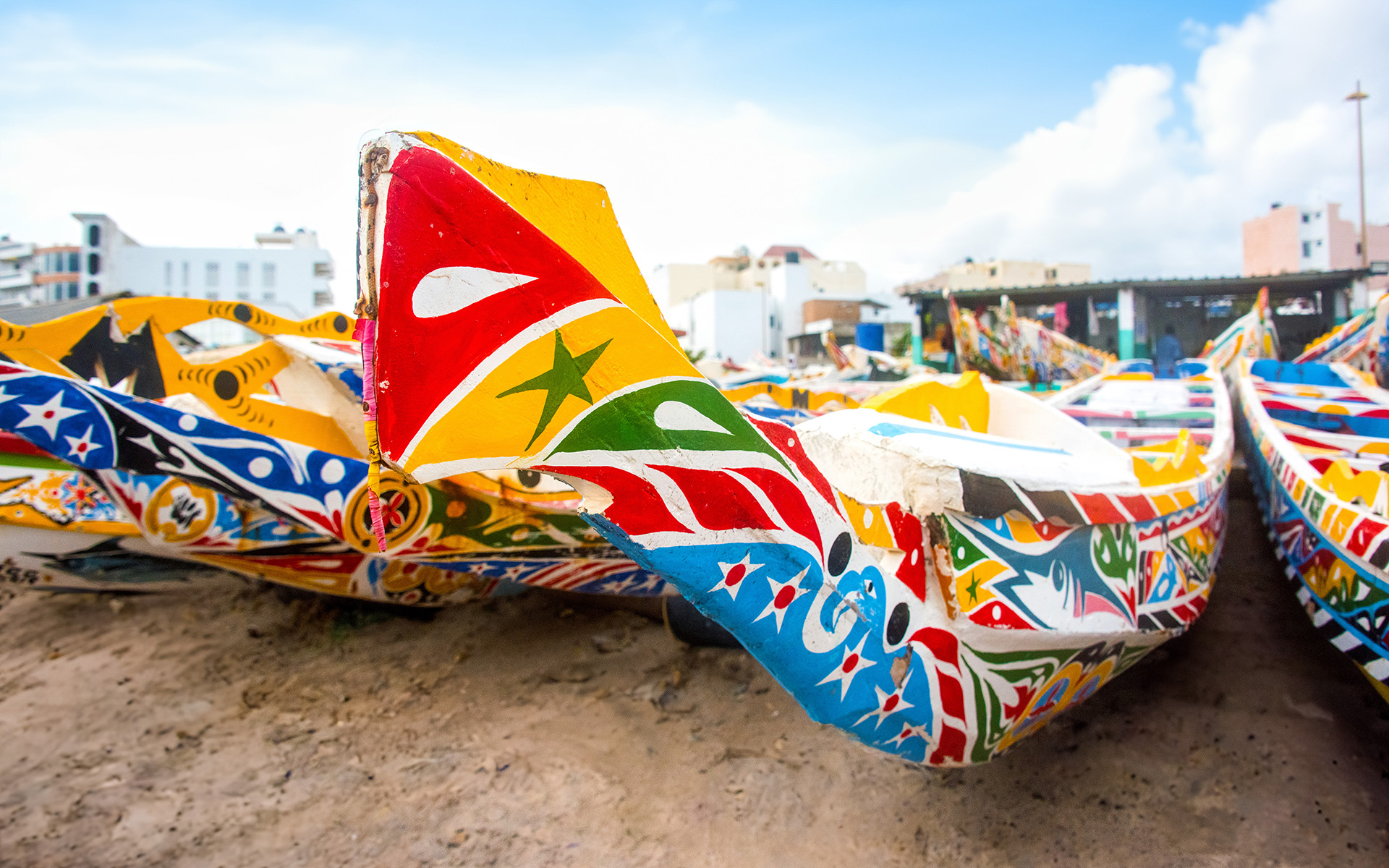Dakar is a city with a promising future powered by an emerging energy industry, but must first navigate worsening flood and water risks.
City Class Score
| Commercial Hubs | |
| Export Champions | |
| Mobility Connectors | |
| Climate Resilient |
Corporate HQs, MNC presence, branded outlets, hotels, manufacturing, start-up ecosystem,
transport linkages, population, and income.
Go to the class information
Manufacturing, industrial parks, export share and share change by category, air and port
infrastructure, freight time to market, trade agreements, and expert interviews.
Go to the class information
Passenger traffic, flight connectivity, air-cargo flights, port infrastructure, container
ship sailings, and major road networks.
Go to the class information
Coastal and river flooding, extreme rain, extreme heat and humidity, cyclones, and water
scarcity.
Go to the class information
Dakar’s iconic fishing boats are not just vessels; they’re vibrant works of art
that line the city’s coast. Each boat, known as a pirogue, is lovingly painted with suns, geometric
symbols, and national flags, reflecting the rich tapestry of the city’s culture. Hundreds of these
colorful boats sway gently along the shores of the Cape Verde Peninsula, which juts into the
Atlantic Ocean. These fishing boats and the nearby historic Soumbedioune fish market, with its maze
of alleys and stalls, is emblematic of the city’s entrepreneurialism. Yet the future of this
bustling metropolis hinges on its ability to navigate the increasing climate challenges it faces.
Senegal stands out as one of Africa’s fastest-growing economies, fueled by a burgeoning oil
and gas industry. However, the capital city also faces escalating climate risks, grappling with
heightened flooding and water stress. The key to sustainable growth lies in ensuring that the rising
export revenues are channeled toward reducing national debt and investing in climate resilience
initiatives. The country is collaborating with global multilateral agencies to tackle these issues,
but few cities illustrate how climate change threatens to derail even the most promising
trajectories like Dakar does.
Flooding has become an annual occurrence, often triggered by
heavy rains and river overflow. In 2023, the city was hit hard, receiving nearly a year’s worth of
rain in just one day, transforming roads into rivers and displacing many residents. As rainfall
becomes more intense and extreme storms more frequent, Dakar’s rapid urbanization has worsened the
situation. Roads and buildings encroach upon the city’s natural flood defenses while the drainage
systems struggle to cope with the deluge. In this regard, Dakar shares similarities with
Bangladesh’s Dhaka,
where man-made defenses like embankments offer only temporary relief against the relentless
floodwaters.
Despite the looming flood risks, the city is also grappling with significant
water stress. Together with neighboring Thies and Mbour, Dakar accounts for the bulk of the
country’s economic activity, leading to an increase in groundwater withdrawal as the population
swells. Meanwhile, the northern Lac de Guiers, which supplies almost a third of the region’s water,
is under threat from pollution. To combat these challenges, Dakar is partnering with the World Bank
to explore recommendations that include loss-reduction strategies and efficiency measures, alongside
the development of nonconventional resources like desalination and water recycling. However,
realizing these solutions will necessitate substantial investment.

